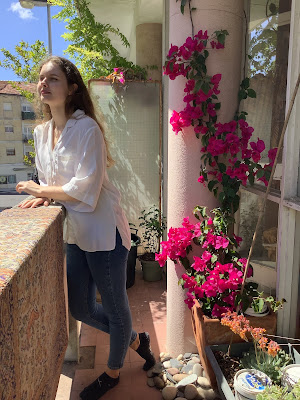Paris is experiencing unusually hot weather for the time of year. A similar situation was reported in Spain a few days ago, and we had an unusually hot day here in Portugal a few weeks back as well.
These hot days are referred to as heat waves by the press, even though they don't last more than a day or two. They're proof of global warming, they claim. However, there's no proof whatsoever that what we're seeing has anything to do with a warmer climate. At least not in Portugal.
If the climate was getting warmer, we would see flowers bursting earlier than usual in spring. However, the very opposite has been the case this year.
I took this picture of my bougainvillea on April 30 last year.
 |
| Bougainvillea April 30, 2021 |
And I took this picture of my wax plant on June 20 2021, exactly one year ago:
 |
| Wax plant June 20, 2021 |
Both pictures display flowers that were about a week ahead in development compared to this year. The few hot days we've had this spring didn't make up for the many cool days. The hot days are therefore evidence of instability, rather than warmer climate.
This picture was taken on June 26 2020, indicating that 2020 had almost as late a start to summer as this year:
 |
| Wax plant June 26, 2020 |
This is something anyone can check for themselves. Find pictures of flowers with associated dates, and compare them to the progress made by the same plants in the current year. If the pictures show more progress than the current year, we have a late spring. If the opposite is the case, we're having an early spring.
This was how people talked about the weather when I was a kid. No-one made a big deal out of it. They would remark on the differences between one year and the other as a curiosity. Everybody knew that spring comes sometimes early and other times late.
Further evidence that nothing alarming is happening can be found by checking a web-camera in a climate sensitive area. This one at Dyranut in Norway is situated at a place that sometimes sees snow in the middle of summer. The snow normally melts away completely by July, only to return in late September.
If the climate is getting warmer, snow at Dyranut should disappear earlier and come back later, but this isn't happening. If anything, this year's summer looks a few days late, just like here in Porto.
 |
| Hardangerjøkulen glacier |
No comments:
Post a Comment